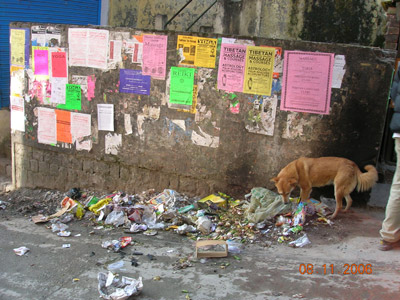 As teens congregated on the balcony outside a nondescript gray building, sipping soda in jeans and miniskirts, women in rainbow-print chupas and braided hair huddled together speaking Tibetan. At the Tibetan American Foundation of Minnesota (TAFM) in St. Paul, Minnesota on Saturday, September 2nd, American-born Tibetans mingled seamlessly with new arrivals to celebrate the 46th annual Tibetan Democracy Day.
As teens congregated on the balcony outside a nondescript gray building, sipping soda in jeans and miniskirts, women in rainbow-print chupas and braided hair huddled together speaking Tibetan. At the Tibetan American Foundation of Minnesota (TAFM) in St. Paul, Minnesota on Saturday, September 2nd, American-born Tibetans mingled seamlessly with new arrivals to celebrate the 46th annual Tibetan Democracy Day.
Tibetan Democracy Day has been observed since 1960 when H.H. Dalai Lama
decided that the Tibetan exile community would be better served using a democratic system. Thus, members were elected into the Assembly of Tibetan People’s Deputies, creating the opportunity for the Tibetan community to participate in their own governing practices. Soon, the governing body was functioning with a stable three-branch administration—legislature, executive, and judiciary—complete with checks and balances, promotion of free speech and appropriate separation of powers. The Kashag, or Cabinet, of the Tibetan Government in Exile in Dharamsala, India, exercises its administrative, political, and policy-making powers under the umbrella of H.H. Dalai Lama, who continues to hold primary executive abilities.
In St. Paul, the TAFM attempted to explain to the crowd the history of Tibetan Democracy Day while providing a venue for the Tibetan community of Minnesota to gather and just hang out. As the newly-appointed President of TAFM, Tsewang Ngodup, said, “It’s a combination of official function and socializing.” The organization has been celebrating this day since the first batch of Tibetans came to Minnesota in the Tibetan Resettlement Project in the early 1990’s.
The association began the day with the film, “Tibet, Tibet,” a story about the unexplainable love Tibetans have for their country, despite the fact that many have never lived in Tibet or even visited it. A documentary put together by the Tibetan Center for Human Rights and Democracy (TCHRD) was then shown, explaining democracy in the Tibetan community and the functions of the Central Tibetan Administration (CTA). The President of TAFM followed the films by reading an official letter from The Kashag, which explained the history of Democracy Day and democracy’s role in the Tibetan community. The Kashag also showed its gratitude towards H.H. Dalai Lama for his endless service and advocacy for the Tibetan community as well as the international community in its ongoing support for the Tibetan cause.
The President continued with his own speech, focusing on the need for more participation in TAFM from the local community. While the community center offers resources, language classes, and a meeting point for Tibetans in Minnesota, it also operates under the North American Tibetan Association in New York, which holds a meeting every summer to discuss goals for local Tibetan Associations around the U.S. At TAFM, the President encouraged people to help elect board members and work with auditing the association’s finances, giving members the chance to take ownership of the organization and ensuring that it flourishes in the future. He specifically called youth to take a more active role in the association because one day the TAFM will be in their hands.
The event continued with cultural displays, such as a traditional Tibetan dance and music performance, and gorshay, a circle dance commonly done at community gatherings and weddings. Groups formed throughout the community center to play sho, a Tibetan dice game, and bingo. Food and drinks were for sale, and solja (butter tea) and drasil, a boiled white rice dish with sugar, butter and raisins, were served free. All food was prepared by the Regional Tibetan Women’s Association. The night was capped off with a
lottery drawing for a Toyota car, donated by Marge Knutson, the first president of TAFM. The winner was Dolma Tsewang, a new arrival from Nepal, who doesn’t even have her driver’s license yet.
Despite an overcast, rainy day in St. Paul, the Minnesota Tibetan community gathered in large numbers for food, fun and commemoration of the first democratic system of the Tibetan Government-in-Exile 46 years ago. With the help of President Tsewang Ngodup and numerous staff and volunteers, the TAFM shared a day with the Tibetan community and beyond, creating memories that will surely remain until next year’s celebration.




 Print
Print Email
Email